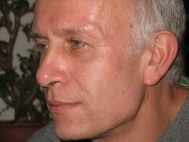Occlusion (dentistry) – Wikipedia
You can find explanations here for any terms used, explained for non-medical professionals.
Fixed braces (often called “train tracks”), when used correctly, can certainly be justified.
What must be taken into account:
All of the teeth must be supported, otherwise the braces quickly become an orthopedic appliance and have an invasive effect.
They should be fitted to the upper jaw, and the bone structures there are much softer than in the lower jaw. Protecting the teeth from overloading in the upper jaw is much more important. It is important to work around the folds in the gums in order to give allow the tongue to maintain an orientation where speaking is facilitated, preventing further deterioration of tongue function due to a forward shift.
The concept of a “Michigan splint” as a “relaxation brace” is logical, and if correctly fitted, causes no damage.
It is fitted to the upper jaw and supports all of the teeth. It has both anterior and canine guidance and helps to set the jaw to myocentric position.
It allows for movement of the lower jaw. Plateaus in the side teeth must be ground down on a weekly basis in order to stop the lower jaw bite from preventing movement.
They are created on the basis of current habitual jaw positioning. This involves a longer process (six months).
The front-tooth-jig from Dr. Wühr Dr. Wühr – Bad Kötzting Dental Practice helps to shorten this process. It is worn for a maximum of three weeks on the lower jaw to aid in returning to a myocentric bite.
The Michigan appliance is then created for the position that is spontaneously achieved: an “improved habitual bite”.
The jig should never be worn for more than three weeks: it can become extremely invasive.
It is important to remember that fixed appliances do not remedy myofunctional habits (bad habits) and their use does not mean that myofunctional therapy is no longer needed.
Adjusted fixed appliance (positioning appliance)
These are fixed braces that are produced on the basis of a central position “supposedly” determined through diagnostic testing, providing relief from occlusion.
These appliances should be banned, even where practitioners are able to demonstrate some success in their use.
The risks of severe chronic cases occurring as a result are far too high.
Justification:
Myocentricity is clearly defined as part of any fundamental course in prosthetics.
It is defined as a lower jaw position where all muscles are relaxed; a spontaneous position that acts as the starting position for all diagnostic measurements for any prosthetic work.
This position has nothing to do with the teeth: it is determined solely by the musculature. The habitual bite is determined on the basis of occlusion.
Every patient has a centric difference: the difference between the myocentric position and habitual bite position.
When this difference is too large, patients experience problems, which depend on the ability of each patient to compensate for the difference. Not a single patient has sat in the chair at my practice to date with a Class I bite, as would be the case for near-perfect myofunction.
Following the principles of logic, MAP patients have no myocentric bite, and there are no diagnostic options available to determine this position while the facial muscles remain in tension.
Invasive measures intended for the masticatory apparatus are on offer for this, but these are lacking a diagnostic basis.
Any dentistry that asserts that an adjusted fixed appliance for the myocentric position can be produced for MAP patients has left behind any sense of logic and scientific basis.
This is aside from the facial muscles’ ability to work together well.
For these cases, the Relaktor combined with MF therapists that are well qualified for their use represent a promising treatment option.
Fixed appliance treatments– Center for Dentistry, Orthodontics and Oral Medicine
A good summary from the Greifswald University on the current standard of medical knowledge relating to fixed appliance treatments which I have previously criticized.

